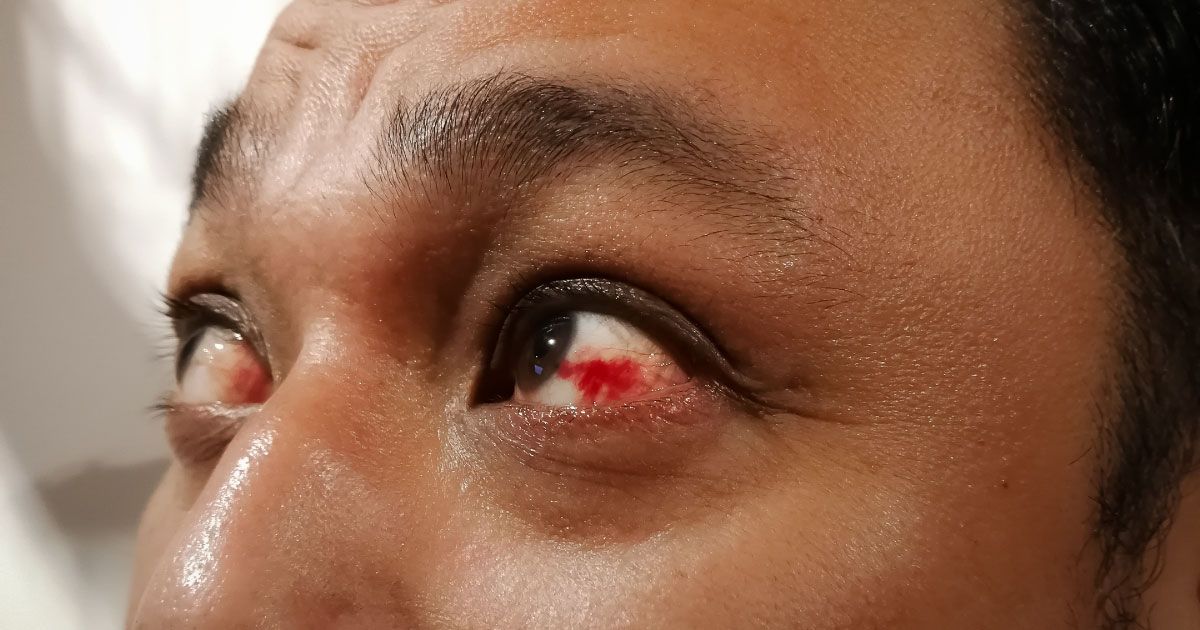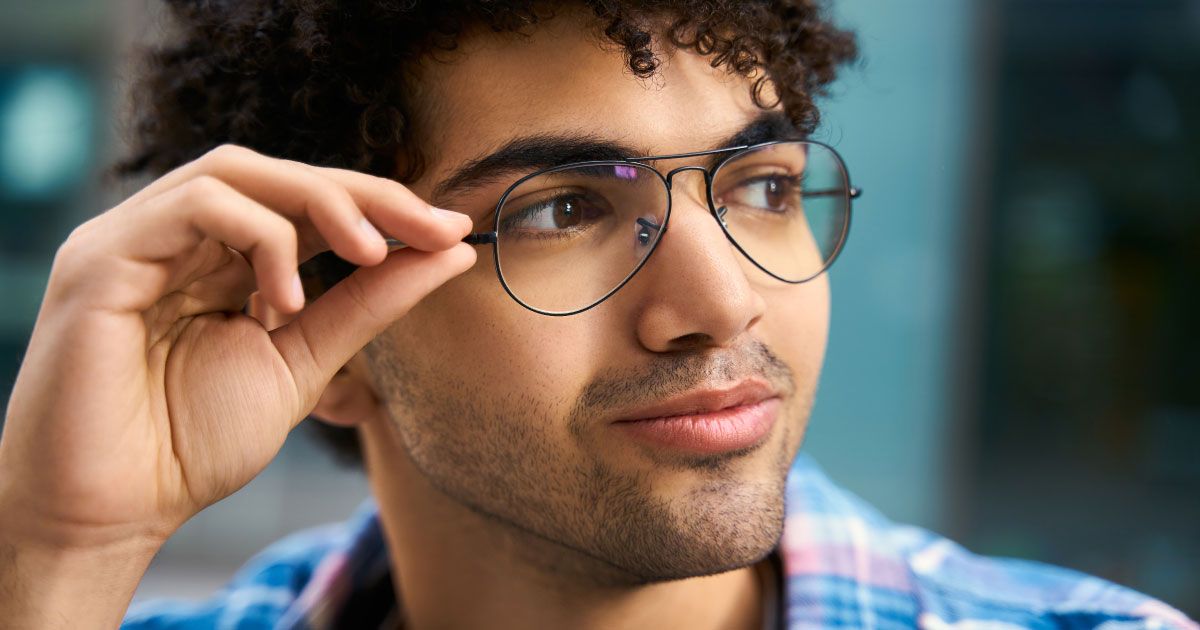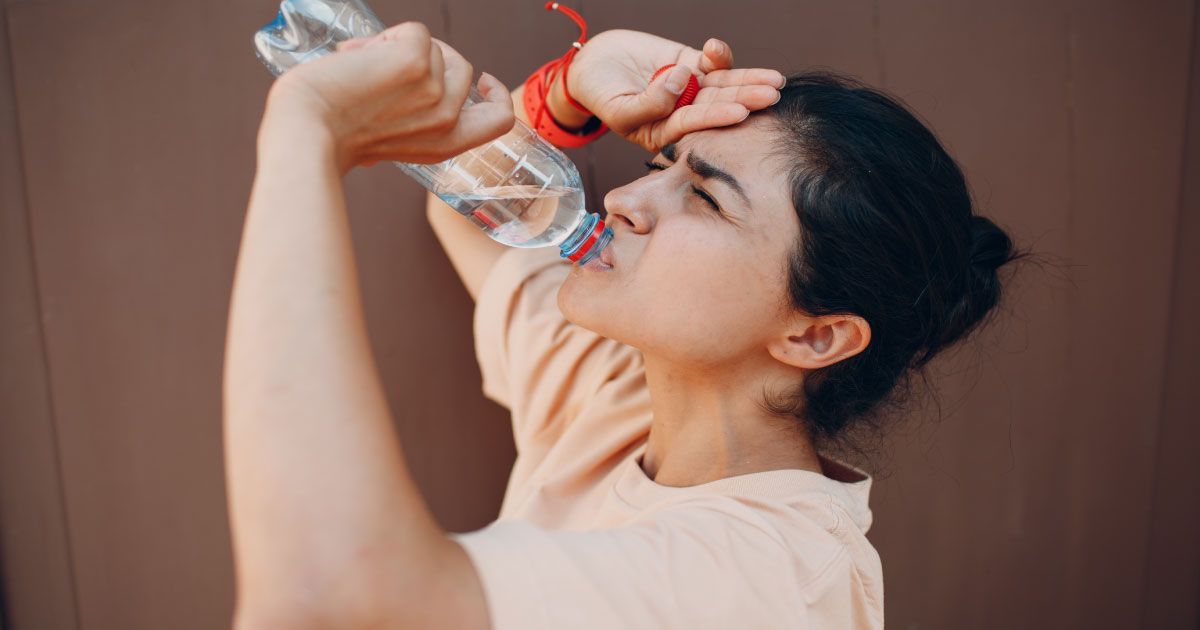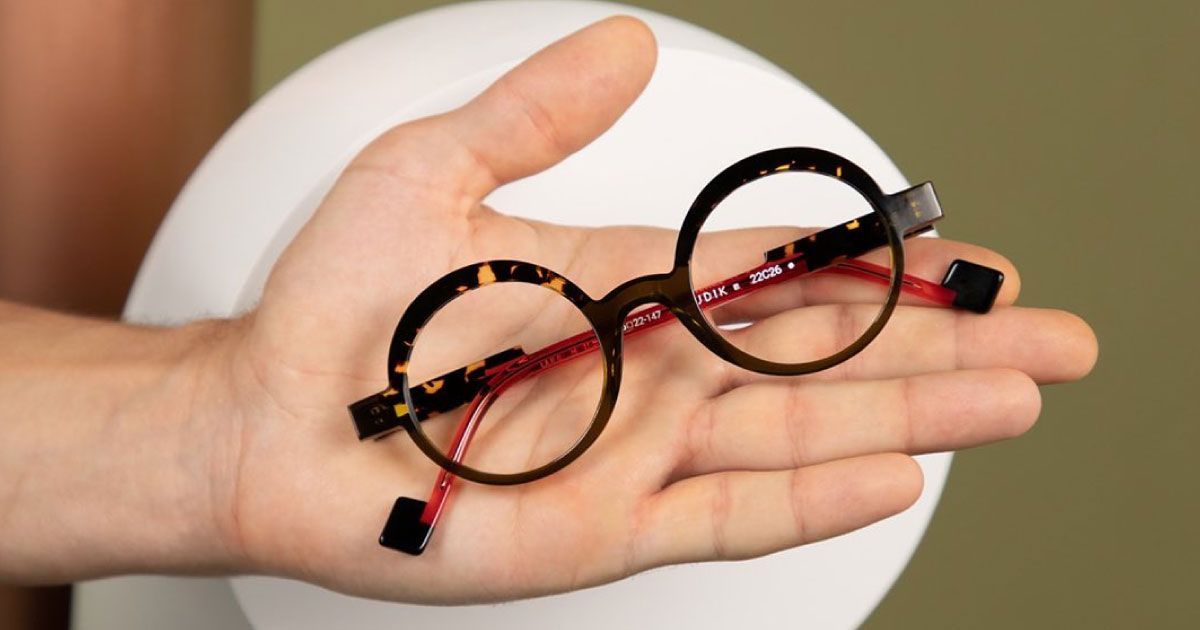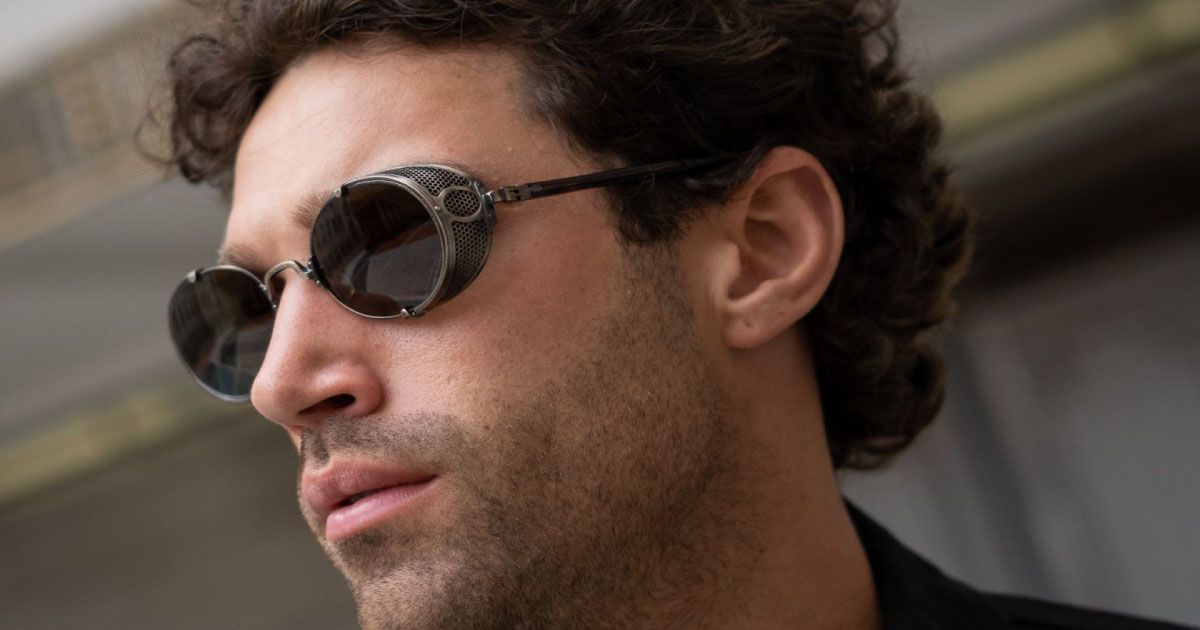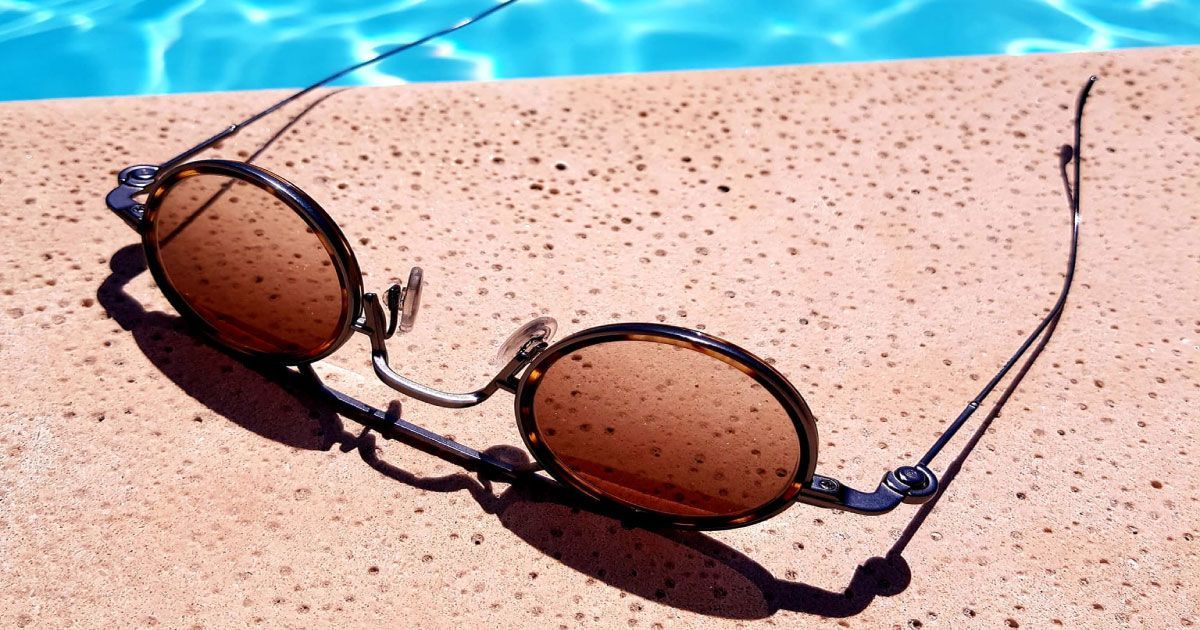Eyewear and Environmental Impact: The Carbon Footprint of Your Glasses

Read time: 7 minutes
The eyewear industry, like many others, has a notable impact on the environment. From the materials used to the manufacturing processes, producing glasses contributes to carbon emissions and pollution. Understanding this impact is the first step in making more eco-friendly choices and supporting brands working to lessen their footprint.
The materials sourced for eyewear include plastics, metals, and natural elements like wood. Each material has its own environmental costs, from extraction to processing. By learning about these materials, we can become more aware of the choices we're making and their broader effects on the planet.
Manufacturing processes also play a big role in the carbon footprint of eyewear. Factories use energy and water, and they generate waste. Some brands are starting to adopt more sustainable practices to lessen these impacts. Knowing what steps companies are taking helps us support those who prioritize environmental health.
In this article, we'll explore the carbon footprint of your glasses. From the types of materials used to production practices, and what steps brands are taking to minimize their impact. This information will help you make informed choices and support sustainable practices in the eyewear industry.
Understanding the Carbon Footprint of Eyewear
Eyewear production has a significant carbon footprint. This footprint includes the energy used in manufacturing, the waste generated, and the transportation of materials and finished products. It's important to understand these aspects to grasp the broader environmental impact of eyewear.
Manufacturing eyewear involves various stages, each consuming energy. Factories that produce glasses use electricity to power machines and heat to mold materials. These processes release pollutants into the air and use large amounts of water. Transportation adds to the footprint as raw materials are shipped to factories and finished products are shipped to retailers.
Waste from manufacturing is another concern. Scraps of plastic, metal, and other materials often end up in landfills. This waste can take many years to break down, contributing to pollution. By understanding these processes, we can start to think more critically about the eyewear we choose and the brands we support.
Sourcing Materials for Eyewear Production
The materials used to make glasses also affect the environment. Common materials include plastic, metal, and natural elements like wood. Each material has a different impact on the planet, from the way it is sourced to how it is processed.
- Plastic: The most common material for frames, plastic is derived from petroleum. Extracting and processing petroleum is energy-intensive and generates a lot of pollution. Plastic frames can also take hundreds of years to decompose if not properly recycled.
- Metal: Metals like aluminum and stainless steel are also used in eyewear. Mining these metals can disrupt ecosystems and release harmful substances into the environment. Processing metal requires high temperatures, which use a lot of energy.
- Wood: Some brands use wood for a natural look. While wood is a renewable resource, cutting down trees affects forests and wildlife habitats. Sustainable practices, like planting new trees to replace those cut down, are essential to mitigate this impact.
- Alternative Materials: Brands are exploring eco-friendly materials like recycled plastic and bio-based acetate. These materials reduce the need for new raw materials and lessen the environmental impact.
Choosing eyewear made from sustainable materials can reduce your carbon footprint. Knowing what goes into your glasses helps you make environmentally responsible choices.
Sustainable Manufacturing Practices in Eyewear
Sustainable manufacturing practices are crucial to reducing the environmental impact of eyewear. Some companies are adopting methods that use less energy and generate less waste. These practices help preserve natural resources and protect the environment.
- Energy Efficiency: Factories can reduce their carbon footprint by using energy-efficient machines and renewable energy sources like solar or wind power. This switch cuts down on greenhouse gas emissions.
- Water Conservation: Manufacturing processes can use a lot of water. Implementing water-saving techniques and recycling wastewater can significantly reduce consumption. This helps preserve this vital resource.
- Waste Reduction: Many manufacturers are finding ways to minimize waste. They recycle scraps of plastic and metal from the production line, turning potential waste into usable materials. Some even use zero-waste designs to ensure every bit of material is used.
- Eco-Friendly Packaging: Sustainable manufacturing also includes reducing waste in packaging. Using recycled and biodegradable materials for packaging helps minimize environmental impact. Avoiding excessive packaging can also lessen waste.
Brands that adopt these practices help reduce the carbon footprint of their products. Consumers benefit by having access to greener options that align with their environmental values.
How Brands Are Reducing Their Environmental Impact
Many eyewear brands are taking steps to reduce their environmental footprint. These initiatives aim to make the entire production process more eco-friendly and sustainable.
- Recycled Materials: Some brands are now using recycled plastics and metals for their frames. This reduces the need for new raw materials and diverts waste from landfills. It’s a practical way to be more eco-conscious.
- Biodegradable Frames: Eco-friendly materials like bio-based acetate are becoming more common. These materials break down more easily in the environment compared to traditional plastics, reducing long-term impact.
- Sustainable Supply Chains: Brands are working to ensure their supply chains are sustainable. This includes choosing suppliers who use eco-friendly practices and ensuring that materials are sourced responsibly.
- Carbon Offsetting: Some companies are investing in carbon offsetting projects to balance out their emissions. This might involve planting trees, funding renewable energy projects, or supporting conservation efforts.
- Certifications and Partnerships: Brands often seek certifications from environmental organizations to show their commitment to sustainability. Partnering with eco-friendly groups helps them stay accountable and continuously improve their practices.
Supporting brands that prioritize these efforts helps drive industry-wide change. Making informed decisions can contribute to a more sustainable future.
Sustainable Eyewear at Urban Optiks Optometry
At Urban Optiks Optometry, we believe that style should not come at the expense of our planet. That’s why we partner with frame vendors who prioritize sustainability and employ practices that significantly reduce their carbon footprint. Here’s a closer look at some of our standout sustainable eyewear brands and their commitment to eco-friendly practices.
- Vinylize Eyewear: Vinylize is a trailblazer in sustainable eyewear, creating frames from recycled vinyl records. Each pair not only offers a unique aesthetic but also embodies a commitment to reducing waste. By repurposing materials that would otherwise end up in landfills, Vinylize minimizes its environmental impact while promoting a circular economy. Their production process is designed to limit resource consumption, making every pair of glasses a stylish choice for the eco-conscious consumer.
- Rolf Substance: Rolf's innovative 3D-printed eyewear takes sustainability to the next level by utilizing bio-based materials derived from castor beans. This process significantly lowers the carbon footprint associated with traditional eyewear manufacturing. Rolf’s philosophy revolves around sustainability, with a focus on creating durable, lightweight frames that require less energy to produce. Each pair is crafted with precision and care, ensuring that you receive high-quality eyewear while supporting environmentally responsible practices.
- FEB31ST: FEB31ST is dedicated to creating eyewear from sustainably sourced woods, showcasing the beauty of natural materials while being mindful of the environment. Their frames are crafted from wood that is ethically harvested, promoting responsible forestry practices. This brand’s sustainability philosophy emphasizes the importance of using renewable resources, reducing plastic consumption, and supporting biodiversity. By choosing FEB31ST, you’re not just wearing a beautiful frame—you’re also contributing to the preservation of forests and ecosystems.
By choosing eyewear from these sustainable vendors, you're making a conscious choice to support eco-friendly practices in fashion. At Urban Optiks Optometry, we’re proud to offer stylish, high-quality eyewear that aligns with our commitment to reducing our carbon footprint and protecting our planet.
The Takeaway
The environmental impact of eyewear is significant, but there are ways to mitigate it. By understanding the carbon footprint of eyewear, sourcing sustainable materials, and supporting brands with eco-friendly practices, we can make a positive difference. Sustainable manufacturing practices and responsible sourcing are key to reducing the overall carbon footprint. Brands are taking notable steps to lessen their environmental impact by using recycled materials, biodegradable frames, and sustainable supply chains.
At Urban Optiks Optometry, we are committed to offering eyeglasses in San Diego that align with these sustainable values. Choosing the right eyewear can help protect our planet while still fitting your style and needs. Visit Urban Optiks Optometry today to explore our range of eco-friendly eyewear options and take a step towards a greener future.
Share this blog post on social or with a friend:
The information provided in this article is intended for general knowledge and educational purposes only and should not be construed as medical advice. It is strongly recommended to consult with an eye care professional for personalized recommendations and guidance regarding your individual needs and eye health concerns.
All of Urban Optiks Optometry's blog posts and articles contain information carefully curated from openly sourced materials available in the public domain. We strive to ensure the accuracy and relevance of the information provided. For a comprehensive understanding of our practices and to read our full disclosure statement, please click here.



